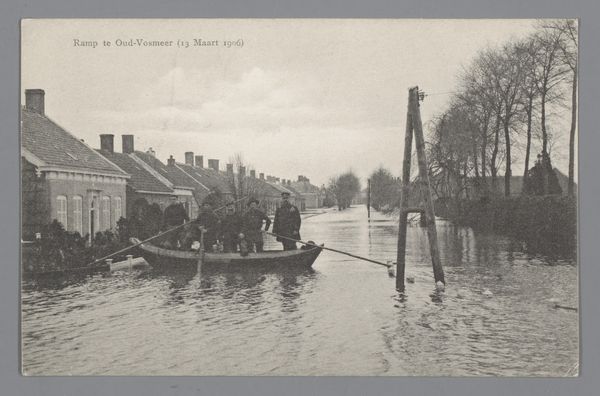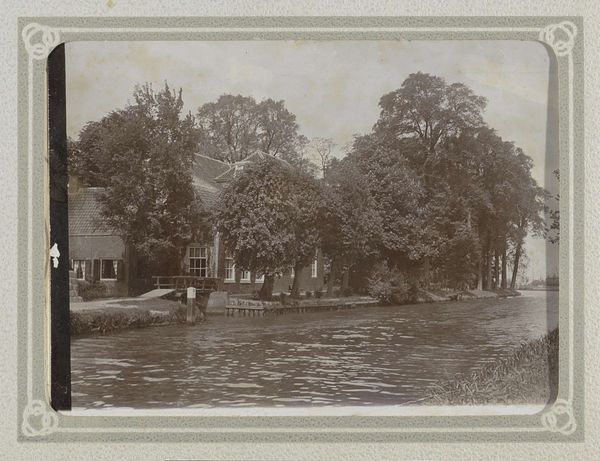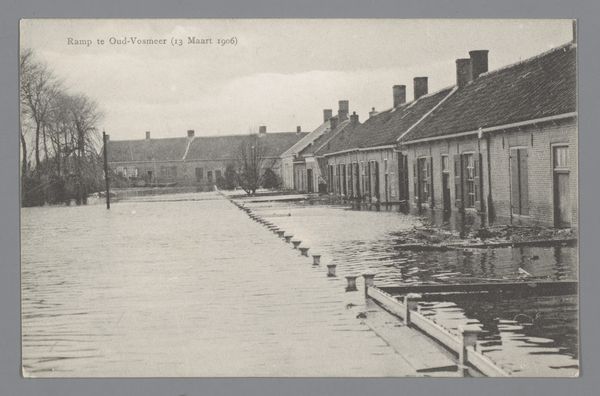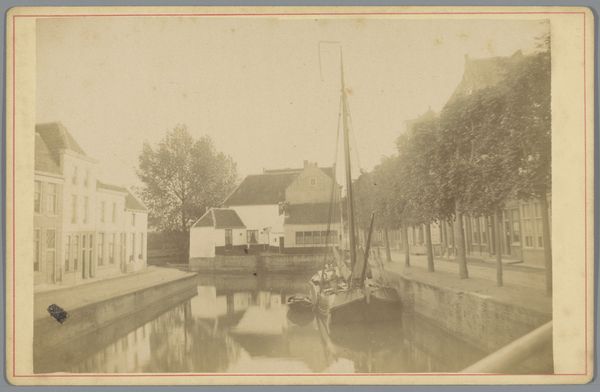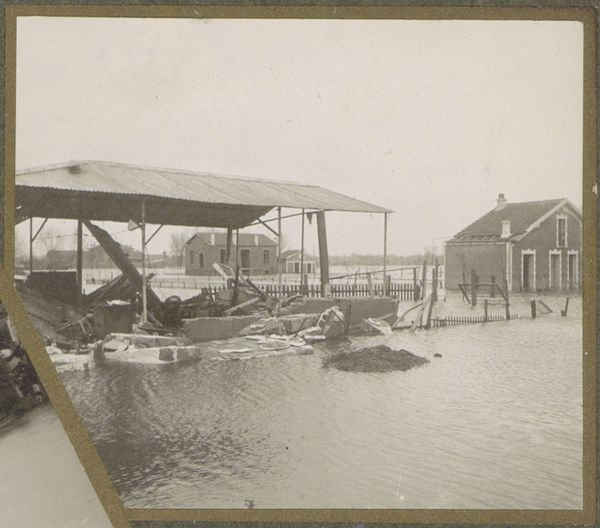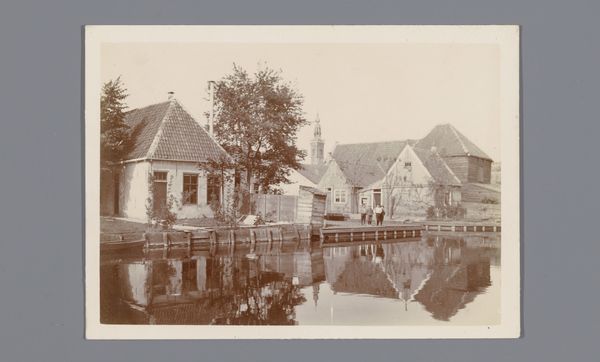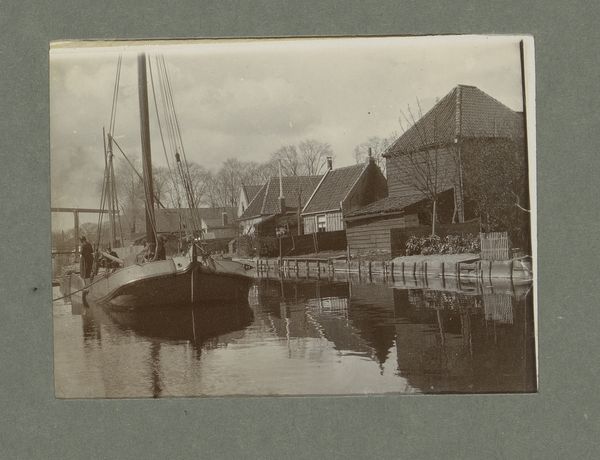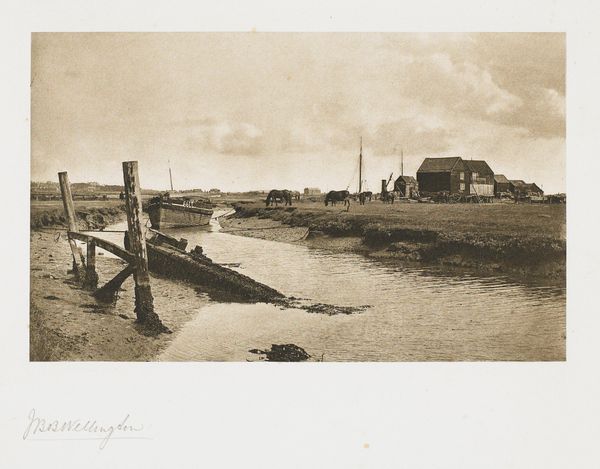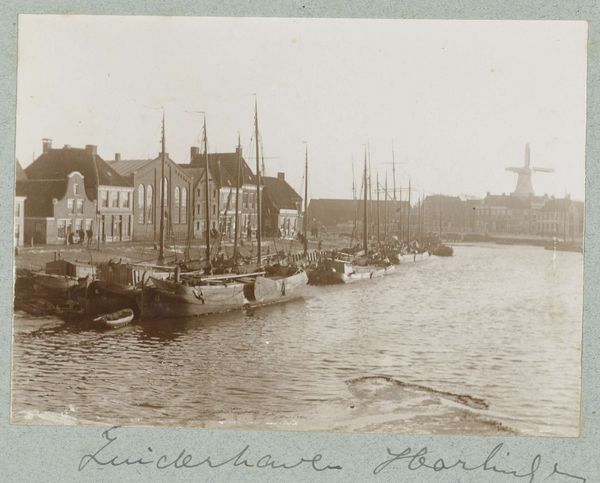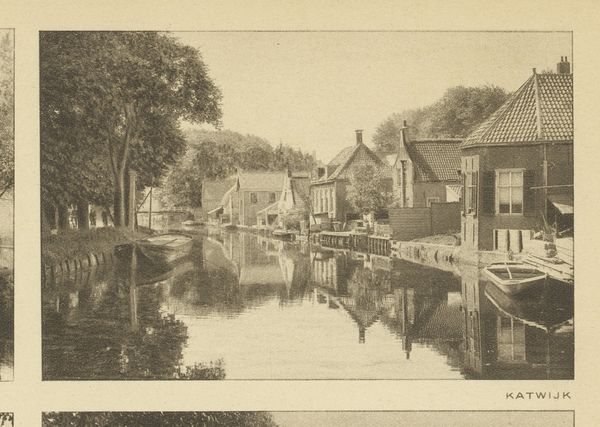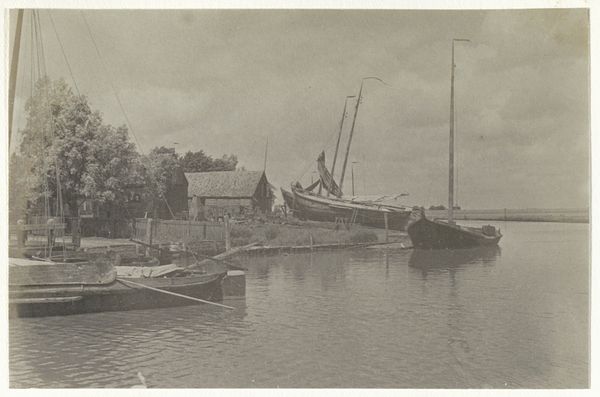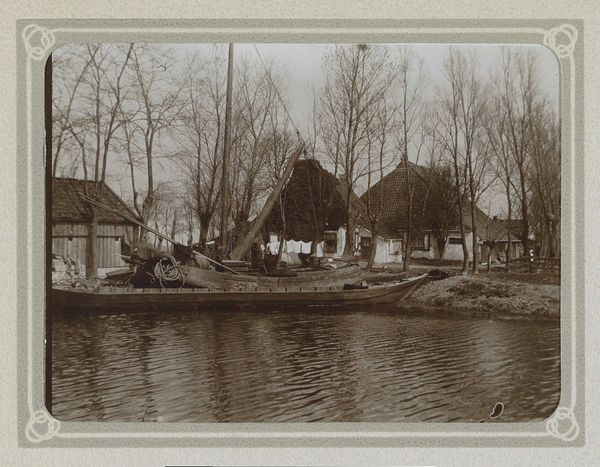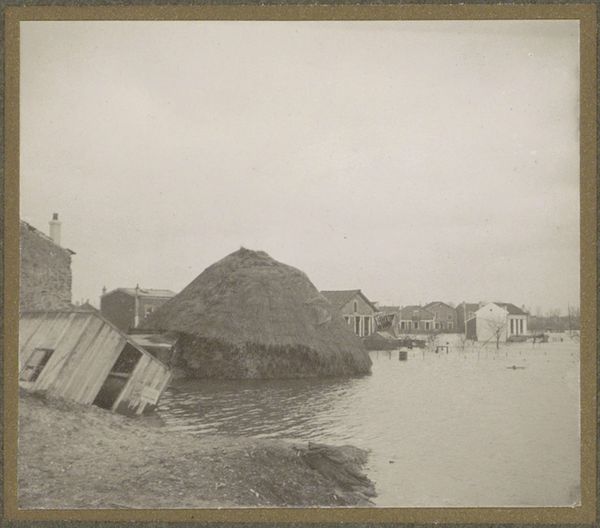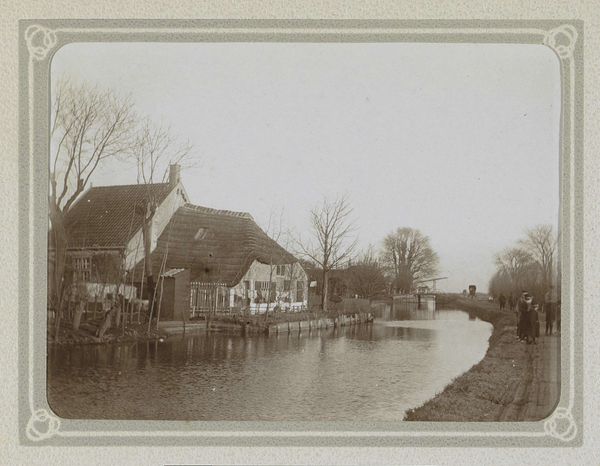
print, photography
#
dutch-golden-age
# print
#
landscape
#
photography
#
genre-painting
#
realism
Dimensions: height 9 cm, width 14 cm
Copyright: Rijks Museum: Open Domain
Editor: This photograph, titled "Ramp te Oud-Vossemeer op 13 maart 1906" by the Gebroeders van Straaten, captures a flooded townscape in muted tones. There's a boat with several figures in the middle, seemingly navigating through the waterlogged streets. What kind of stories or symbols do you think resonate within this image? Curator: The most prominent symbol here is, of course, water itself. Beyond its literal representation of the flood, it can represent purification, chaos, or even rebirth. It depends on what continuities you observe in the composition of the scene. Ask yourself, is there a source, is the church consumed or preserved? How are the human figures arrayed in the space of the flood? Editor: I see what you mean. The church, while partly surrounded by water, remains standing tall, and people use a boat for navigation in a group. How do these aspects speak to the time, maybe culturally? Curator: Yes! Churches often symbolize hope and resilience in the face of adversity, providing emotional shelter. The figures huddled together in a boat point to community, hinting at collective survival strategies, perhaps a shared experience. Can you infer a social hierarchy depicted, if at all? Are any groups excluded? Editor: I don’t know for sure, but this photo now looks less bleak. Curator: Look at how the architecture blends realism with the pictorial. The dark buildings in contrast with the overcast sky create a mood that is more complex than despair. The people may appear small in comparison to nature’s power, but they are present nonetheless, acting as both witnesses and agents. Editor: I had focused on the event in the photograph but seeing the recurring symbols now opens a new window to interpreting it! Curator: Exactly! Photographs such as this serve not just as records but as complex narratives shaped by symbols and cultural memory.
Comments
No comments
Be the first to comment and join the conversation on the ultimate creative platform.
